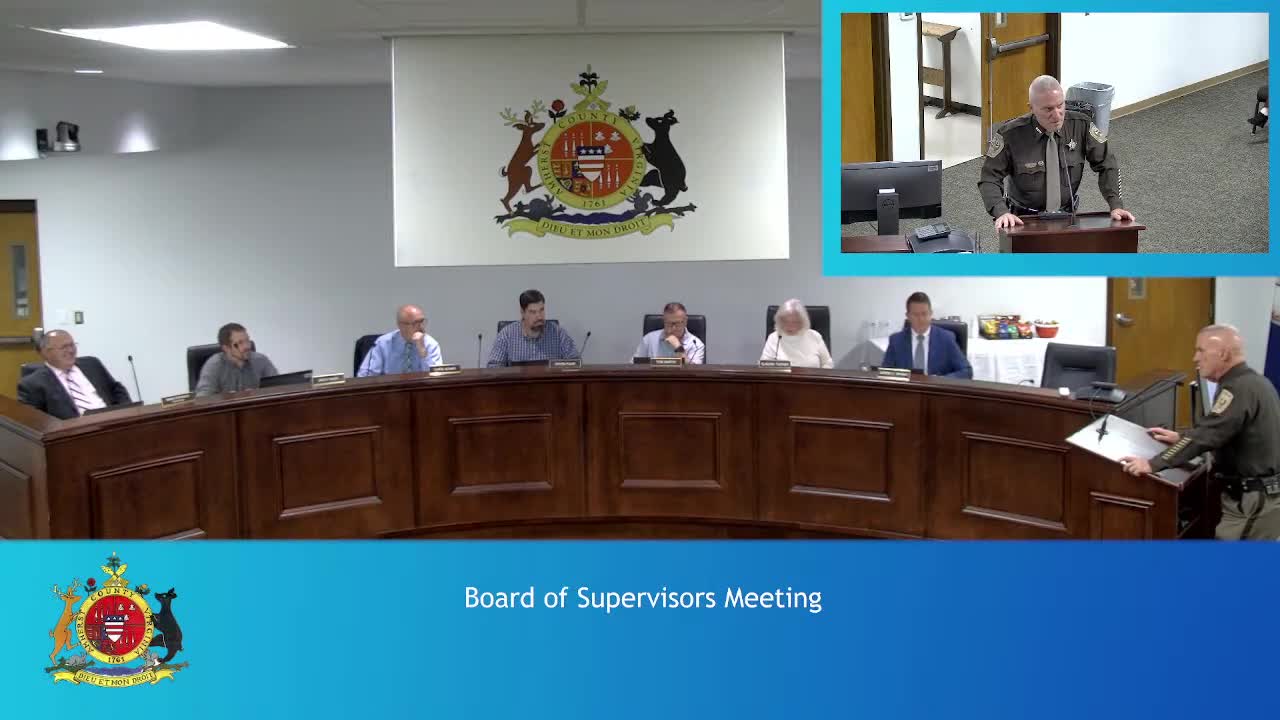Amherst County adopts abandoned-vehicle ordinance and sets 75-foot setback option for energy storage sites
October 22, 2025 | Amherst County, Virginia
This article was created by AI summarizing key points discussed. AI makes mistakes, so for full details and context, please refer to the video of the full meeting. Please report any errors so we can fix them. Report an error »

The Amherst County Board of Supervisors on Oct. 21 adopted a revised abandoned-vehicle ordinance and approved an ordinance setting a 75-foot setback standard for energy storage facilities, county officials said.
The abandoned-vehicle ordinance replaces a longer, multi-step notice process with a standardized multi-copy form officers will serve to vehicle owners, the sheriff’s office told the board. The form lists vehicle details and the time owners have to remove the vehicle. Because the county lacks storage space, staff said it has arranged for Virginia Auto Parts, a local salvage yard, to pick up vehicles, hold them for five additional days for owner retrieval and then proceed with disposal if unclaimed.
The board also approved an ordinance requiring the project area for energy storage facilities to be set back at least 75 feet from all property lines, with exceptions for adjoining parcels owned by the applicant. The ordinance makes energy storage uses subject to a special-exception review in the M-1 industrial district and explicitly allows the board of supervisors to increase the setback through conditions imposed during the special-exception process “to ensure the public safety, health, and welfare of the surrounding community,” county staff said.
Both measures passed on voice votes with motions recorded by the board. Supervisor Wade moved adoption of ordinance 2025-6 (abandoned vehicles); Supervisor Pugh moved approval of ordinance 2025-1 (energy storage setbacks). In both cases the chair called for “aye” and declared the motions passed; no roll-call tallies were recorded in the public minutes.
County staff said there were no other substantive changes to the energy storage ordinance since an earlier draft. Planning staff noted that geographic preferences and guidance for siting are addressed in the county’s Comprehensive Plan, which staff posted on the county website.
The abandoned-vehicle change responds to what sheriff’s staff described as a lengthy, repetitive notice process; the new form and the arrangement with a private salvage yard are intended to shorten the county’s administrative burden. County staff and the sheriff said the salvage yard would store vehicles for five days after pickup for owner retrieval before disposal procedures begin.
The energy storage ordinance was previously tabled to allow staff time to craft setback language and to preserve flexibility so the board can require larger setbacks depending on adjacent land uses, staff told supervisors. The ordinance as approved sets a clear 75-foot baseline and preserves the board’s authority to impose larger setbacks through special-exception conditions.
The board approved the items during its regular meeting after a public hearing on the abandoned-vehicle ordinance; no members of the public spoke in favor or opposition during that hearing. The board approved the energy storage ordinance during a nonpublic-hearing portion of the agenda.
The abandoned-vehicle ordinance replaces a longer, multi-step notice process with a standardized multi-copy form officers will serve to vehicle owners, the sheriff’s office told the board. The form lists vehicle details and the time owners have to remove the vehicle. Because the county lacks storage space, staff said it has arranged for Virginia Auto Parts, a local salvage yard, to pick up vehicles, hold them for five additional days for owner retrieval and then proceed with disposal if unclaimed.
The board also approved an ordinance requiring the project area for energy storage facilities to be set back at least 75 feet from all property lines, with exceptions for adjoining parcels owned by the applicant. The ordinance makes energy storage uses subject to a special-exception review in the M-1 industrial district and explicitly allows the board of supervisors to increase the setback through conditions imposed during the special-exception process “to ensure the public safety, health, and welfare of the surrounding community,” county staff said.
Both measures passed on voice votes with motions recorded by the board. Supervisor Wade moved adoption of ordinance 2025-6 (abandoned vehicles); Supervisor Pugh moved approval of ordinance 2025-1 (energy storage setbacks). In both cases the chair called for “aye” and declared the motions passed; no roll-call tallies were recorded in the public minutes.
County staff said there were no other substantive changes to the energy storage ordinance since an earlier draft. Planning staff noted that geographic preferences and guidance for siting are addressed in the county’s Comprehensive Plan, which staff posted on the county website.
The abandoned-vehicle change responds to what sheriff’s staff described as a lengthy, repetitive notice process; the new form and the arrangement with a private salvage yard are intended to shorten the county’s administrative burden. County staff and the sheriff said the salvage yard would store vehicles for five days after pickup for owner retrieval before disposal procedures begin.
The energy storage ordinance was previously tabled to allow staff time to craft setback language and to preserve flexibility so the board can require larger setbacks depending on adjacent land uses, staff told supervisors. The ordinance as approved sets a clear 75-foot baseline and preserves the board’s authority to impose larger setbacks through special-exception conditions.
The board approved the items during its regular meeting after a public hearing on the abandoned-vehicle ordinance; no members of the public spoke in favor or opposition during that hearing. The board approved the energy storage ordinance during a nonpublic-hearing portion of the agenda.
View full meeting
This article is based on a recent meeting—watch the full video and explore the complete transcript for deeper insights into the discussion.
View full meeting
